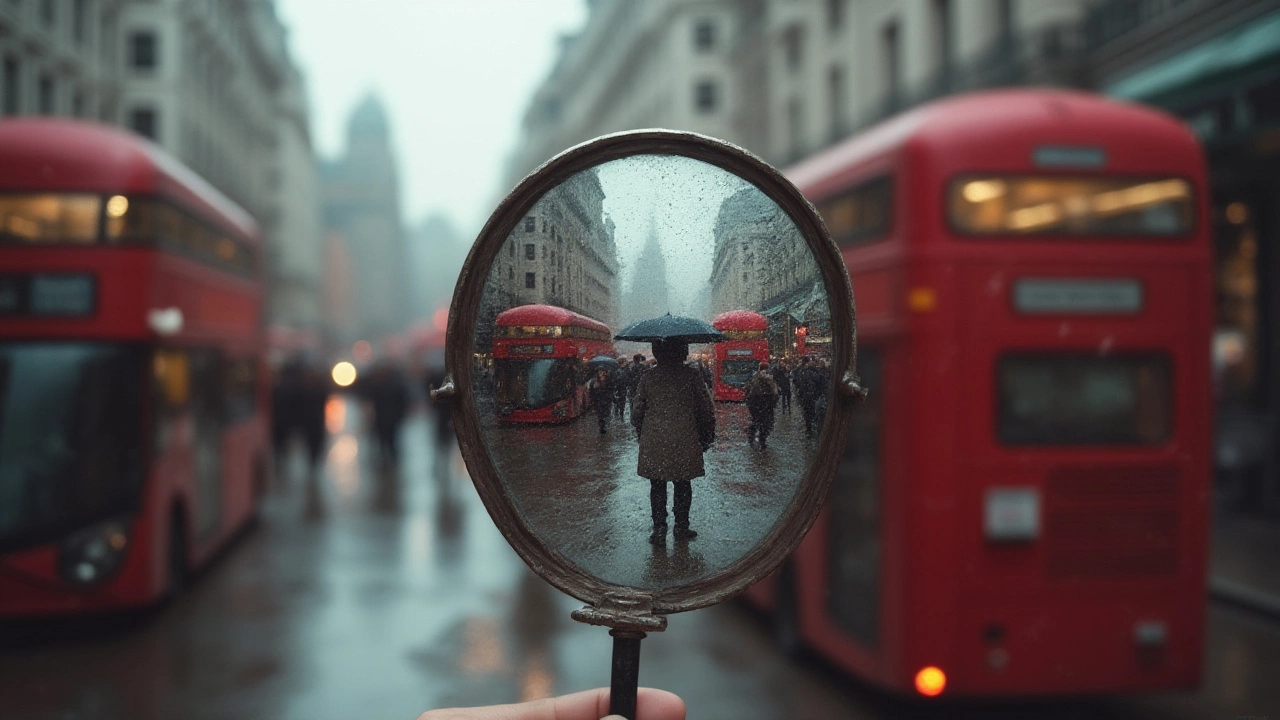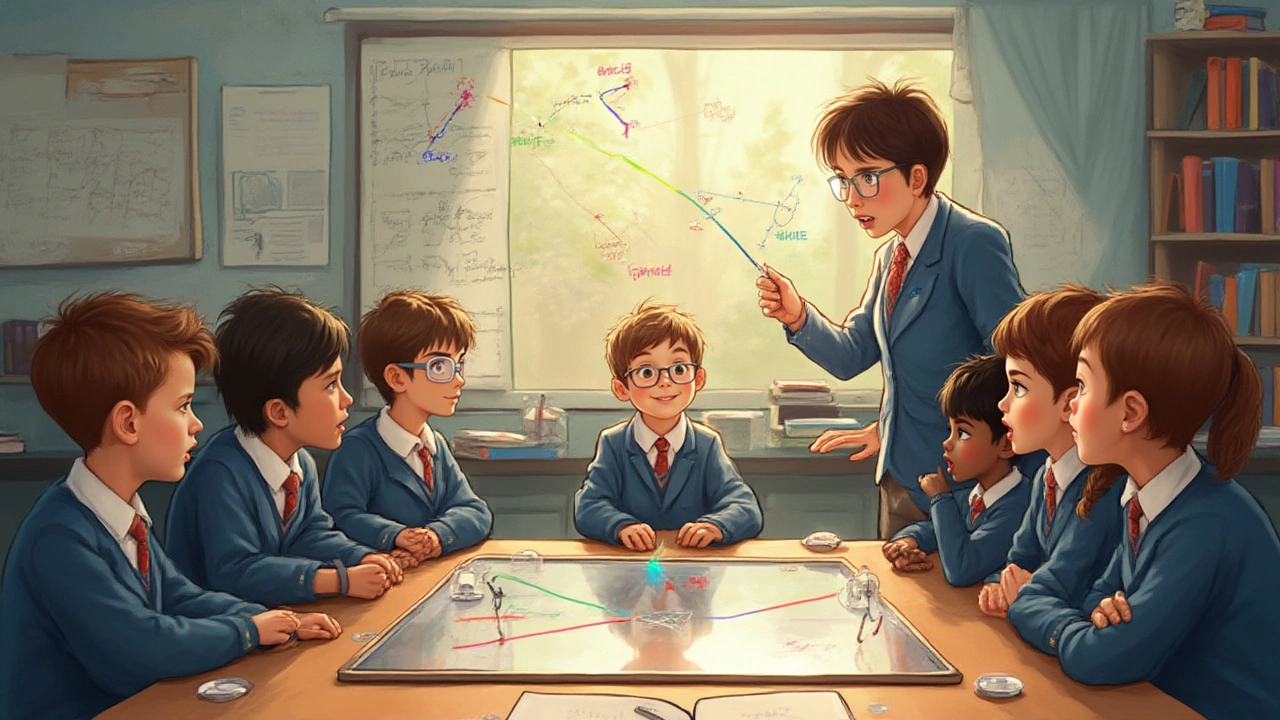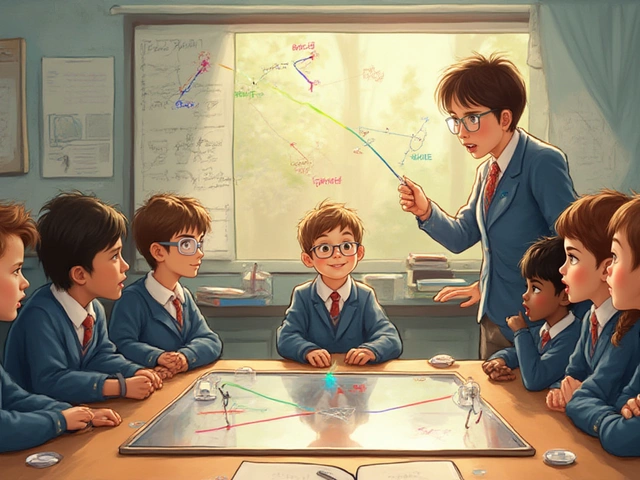Ever tried catching sunlight bouncing off a bathroom mirror and ended up blinded? Or noticed that you face left when you move right in a mirror? It’s wild how lists of physics laws, like the mirror rules, turn your reflection into such a mind-bender. But beyond party tricks and perfect selfies, understanding how mirrors work—especially Rule 2—sneakily runs the show every time you flick on a torch, glance in a bathroom mirror, or just squint at those weird roadside reflectors.
Unveiling the Mirror Rules: What’s Up with Rule 2?
Mirrors are everywhere, but most people wouldn’t know their behavior follows strict, ancient physics rules. Physics class boiled it down to “laws of reflection,” and these rules aren’t just dusty ideas printed in old textbooks. They’re right there every time you check your makeup, shave, or drive at night. When we talk about ‘Rule 2 of a mirror,’ we’re really talking about the second law of reflection. And while Rule 1 gets all the easy fame—"the incident ray, reflected ray, and the normal all lie in the same plane"—Rule 2 throws in the real twist.
Mirror rule 2 says: "The angle of incidence equals the angle of reflection." It sounds almost too simple. Here’s what it really means: Imagine a light beam shooting straight at a mirror. It hits the mirror at a certain angle—that’s the angle of incidence. The mirror bounces that light back at exactly the same angle on the other side—that’s the angle of reflection. No cheating, no fudging, every single time. It’s like playing pool, except the law is invincible and never off by even a millimeter.
This rule is the backbone for everything about how we see ourselves in a mirror. If you move closer, the angle changes, and so does your reflection. Turn your head, and the reflected angle shifts in perfect sync. Want to check if this law actually works at home? Shine a flashlight at a mirror from a weird angle (anything except straight on). You’ll notice the light bounces off at the exact opposite angle, like it’s mirroring your move with robotic precision.
It might look like magic when you see rays bouncing in perfect lines, but this law is about cold, hard geometry. Early Arab and Greek scientists (think Alhazen, centuries before Newton) puzzled this out—long before Instagram and Snapchat filters even had a shot. Their findings got baked into modern optics and appear in everything from police radar guns to fiber-optic cables zipping under the oceans.
Why the Angle Really Matters: Real-World Examples of Rule 2
You see Rule 2 flexing its muscles everywhere without realizing it. Here’s a daily example: when it rains at night, headlights hit the slick road and reflect straight into your eyes. The angle at which those lights hit the road determines how much glare you see (or don’t see). Ever wondered why makeup and barbershop mirrors have lights tilted at very specific angles? It’s to direct the light to where it’s needed, all thanks to Rule 2.
Try this at home. Stand in front of a square mirror. Hold a colored pencil at your nose, just touching the glass, pointing at an angle. Peek at the reflection. Suddenly, you realize your pencil’s direction in the reflection perfectly matches the angle you pointed in reality—flipped, but precise. Rule 2 is literally painting that image for you.
The world of design thrives on this law. Home architects will position bathroom lights so your face isn’t in shadow—again, angling reflectors just right. The folks who set up traffic mirrors at Auckland’s tricky street corners rely on this law to show you what’s coming around the bend. Even home decorators, when choosing mirrored backing behind plants or art, use Rule 2 so the light pops at the right angle and nothing looks dull or thrown-off.
Periscopes, fiber-optic phone lines, even the shiny cat’s eye reflectors along New Zealand’s highways: all work because the angle of incidence matches the angle of reflection. Without Rule 2, your video call would look like a crumpled disco ball through the screen.

Seeing the Law in Action: Experiments and Fun Tricks
No need to wear a lab coat to make physics real. Kick your curiosity into gear with these hands-on ways to see the law at work. Try shining your mobile flashlight at a mirror held at an angle. Put a sticky note on the wall and try to hit the sticky note’s reflection by bouncing your light off the mirror. The flashlight won’t hit the note unless you aim at just the right angle, matching the angle of reflection to the one you started with.
If you have a ruler or protractor lying around, measure it all out like a scientist. Shine your light at 30 degrees from a straight-up position. Then trace the reflected ray, and you’ll find it’s 30 degrees on the other side, every single time. It won’t budge; this law is annoyingly reliable.
Bored at a party with nothing but a mirror and a coin? Stand to one side, place the coin on the table in front of the mirror, and try to cover your eyes so you can’t see the coin directly—only its reflection. Now try to touch the coin “inside” the mirror. Spoiler: it’s not possible, and your finger always stops at the glass. Why? Because your brain traces the light path, following Rule 2 in reverse, and expects the coin to float behind the mirror.
Use Rule 2 in daily life by getting crafty with jewelry lighting. Want your gemstones to sparkle in a dull room? Angle a lamp or a shiny tray nearby, and you’ll double the glitter. Science museums and children’s exhibits often let kids play with mirrors arranged in a maze, showing how Rule 2 guides every ray—kind of like trying to sneak a bug across a kitchen bench while your cat follows every shadow and bounce.
| Device or Application | How Rule 2 is Used |
|---|---|
| Bathroom Makeup Mirror | Angles light for optimal face illumination |
| Roadside Cat's Eye Reflectors | Mirrors car headlights back at drivers |
| Fiber-Optics | Light bounces along cable at precise angles |
| Periscopes | Mirror angles let you peek over walls |
| Photography Lighting | Reflectors bounce fill-light on models evenly |
Cool Tips, Everyday Hacks, and Odd Facts about Mirror Rule 2
Feel like mirrors are just a flat piece of glass? Not true. The secret sauce—thin, shiny layers of metal behind the glass—lets Rule 2 take charge. This is where accuracy matters: imperfections in the mirror’s surface will warp the reflection because those tiny bumps mess with the angles. Buy a cheap mirror and suddenly you look taller, shorter, or like you ran into a carnival funhouse.
Try setting up a desk mirror across your room to catch the winter sun. With the right angle, you bathe your reading nook in hot sunlight for free. Or use hand mirrors to direct sunlight onto shady plants—urban New Zealanders do this to get more growth out of their indoor jungles. As long as the angle of incoming sunlight matches the angle you aim, you get a perfect sunbeam wherever you want it. That’s Rule 2 at work.
Planning a selfie? Hold your phone so the flash shoots at a low angle to the mirror, not straight on. This way, you control glare and get less blinding brightness. Professional photographers angle their lights for every shot to take the best pictures—they know Rule 2’s a secret superpower and not just school trivia.
Here’s another quirky fact: if you try to view yourself in a perfectly flat mirror that’s not vertical, your image will stretch and do strange things. Ever wondered why mirrors have to be flat and straight? Twist a mirror, and you bend the angles, which ruins any chance of Rule 2 showing a true-to-life reflection. Car side mirrors, purposely curved, give you that “Objects in mirror are closer than they appear” warning because the angles mislead your eyes, bending Rule 2 in clever, useful ways.
Rule 2 also explains why lasers cut so precisely. The sharp, focused beam obeys the equal-angles law, bouncing neatly down to a point or across a surface. Anything from a disco ball to high-security barcode scanners lives and dies by Rule 2.
Now, next time you spot someone using a makeup mirror in the back of a bus, or you wonder why your bedroom feels brighter after moving a mirror, you’ll know it’s not just luck or good taste in decor. It’s physics, sneaking into everyday life, ruling every reflection with that simple, rock-solid symmetry: the angle you come in is the angle you go out. Rule 2 may not get the glory, but it keeps the magic real.

